George Cukor was an American film director who worked in Hollywood from the early 1930s to the 1980s.
Over the course of his career, he directed numerous films in a variety of genres, but he is perhaps best known for his work in the field of romantic comedy. Here are some of his best films:
“The Philadelphia Story” (1940): This classic romantic comedy stars Cary Grant, Katharine Hepburn, and James Stewart and tells the story of a wealthy socialite who must choose between three suitors.
The film is known for its sparkling dialogue, sharp wit, and unforgettable performances.
“Adam’s Rib” (1949): This film stars Spencer Tracy and Katharine Hepburn as a married couple of lawyers who take opposite sides in a case involving a woman who shot her unfaithful husband.
The film is a smart and witty exploration of gender roles and power dynamics in marriage and the workplace.
“My Fair Lady” (1964): This beloved musical stars Audrey Hepburn as a Cockney flower girl who is transformed into a lady by a linguistics professor played by Rex Harrison.
The film features unforgettable songs, dazzling costumes, and a memorable performance by Hepburn.
“A Star Is Born” (1954): This musical drama stars Judy Garland and James Mason and tells the story of a young singer who rises to fame while her husband’s career declines.
The film is a powerful exploration of the price of fame and the toll it can take on personal relationships.
Best George Cukor Movies
George Cukor’s films are known for their wit, sophistication, and memorable performances.
They are classics of Hollywood cinema and continue to be beloved by audiences around the world.
1. The Philadelphia Story (1940)
“The Philadelphia Story” is a 1940 romantic comedy film directed by George Cukor and starring Katharine Hepburn, Cary Grant, and James Stewart.
The film tells the story of a wealthy socialite, Tracy Lord, who is about to remarry, but finds herself caught between the affections of her ex-husband, a tabloid reporter, and her staid fiancé.
The film is notable for its sparkling script, sophisticated humor, and strong performances from its cast.
Hepburn is particularly outstanding as Tracy, showcasing her trademark wit and vulnerability, while Grant and Stewart deliver charming and memorable performances as her love interests.
The film explores themes such as love, marriage, and the class divide, and features expertly crafted dialogue that crackles with wit and tension.
The film’s iconic scene, where Hepburn drunkenly sings “I Have a Dream” while Stewart accompanies her on the piano, has become a classic moment in Hollywood cinema.
“The Philadelphia Story” was a commercial and critical success upon its release, and is now widely considered a classic of the romantic comedy genre.
The film’s combination of humor, romance, and social commentary continues to captivate audiences today, and its legacy can be seen in countless films that have followed in its wake.
If you like George Cukor’s work, on our sister site AuteurGraph we have a profile page, a visual film timeline, and a ratings page that gives a tonne of info and data about their career in a visualized form.
- Cary Grant, Katharine Hepburn, James Stewart (Actors)
- George Cukor (Director) - Donald Ogden Stewart (Writer)
- Audience Rating: Unrated (Not Rated)
2. Gaslight (1944)
Gaslight is a 1944 psychological thriller directed by George Cukor and starring Ingrid Bergman, Charles Boyer, and Joseph Cotten. The film is based on a play of the same name by Patrick Hamilton.
The story follows a young woman named Paula (Bergman) who becomes convinced that she is going insane, as strange events begin to occur in her home.
Her husband Gregory (Boyer) appears to be manipulating her, moving objects and dimming the gaslights in the house, leading her to question her own sanity.
Meanwhile, a Scotland Yard detective named Brian Cameron (Cotten) begins to investigate the strange occurrences and discovers a sinister plot.
Gaslight is known for its suspenseful and intense atmosphere, as well as its strong performances by Bergman, Boyer, and Cotten.
The film was well-received by audiences and critics alike, and received seven Academy Award nominations, including Best Picture, Best Director, and Best Actress for Bergman, who won the award.
The film’s influence can still be seen in modern psychological thrillers, and it remains a classic example of the genre.
- Charles Boyer, Ingrid Bergman, Joseph Cotten (Actors)
- George Cukor (Director) - A.R. Rawlinson (Writer)
- English, Spanish, French (Subtitles)
- Audience Rating: NR (Not Rated)
3. My Fair Lady (1964)
“My Fair Lady” is a 1964 musical film directed by George Cukor and based on the stage musical of the same name. Here are three reasons why this film is a classic:
The music: “My Fair Lady” features memorable songs by the legendary team of Alan Jay Lerner and Frederick Loewe, including “I Could Have Danced All Night,” “Wouldn’t It Be Loverly,” and “The Rain in Spain.” The music is an integral part of the film’s appeal and has helped make it a beloved classic.
The performances: The film stars Audrey Hepburn as Eliza Doolittle, a Cockney flower girl who is transformed into a lady by Professor Henry Higgins, played by Rex Harrison.
Both actors deliver unforgettable performances, with Hepburn’s singing dubbed by Marni Nixon.
The supporting cast, including Stanley Holloway and Wilfrid Hyde-White, also add depth and humor to the film.
The production values: “My Fair Lady” is a visually stunning film, with lavish costumes, elegant sets, and breathtaking locations.
The film won Oscars for its art direction, cinematography, and costume design, and its technical achievements continue to impress audiences today.
Overall, “My Fair Lady” is a timeless classic that continues to captivate audiences with its music, performances, and production values.
George Cukor’s direction helps bring the story to life, and the film remains a beloved part of Hollywood’s Golden Age.
- My Fair Lady - DVD Used Very Good
- Audrey Hepburn, Rex Harrison, Cecil Beaton (Actors)
- George Cukor (Director) - Alan Jay Lerner (Writer)
- English, French (Subtitles)
- Audience Rating: G (General Audience)
4. The Women (1939)
“The Women” is a 1939 comedy-drama film directed by George Cukor and starring an all-female ensemble cast, including Norma Shearer, Joan Crawford, and Rosalind Russell.
The film follows the lives of several wealthy Manhattan women, and their relationships and infidelities, as they navigate through various social and romantic dilemmas.
The film is notable for its sharp dialogue, biting humor, and witty commentary on gender roles and social conventions.
The all-female cast was unusual for the time, and the film was praised for its frank depiction of women’s lives and relationships.
The performances in the film are uniformly excellent, with Shearer delivering a standout performance as Mary Haines, a wealthy wife and mother whose husband has an affair with a shop girl.
Crawford is also memorable as Crystal Allen, the woman who steals Mary’s husband, and Russell shines as the acerbic gossip columnist Sylvia Fowler.
“The Women” was a commercial and critical success upon its release, and remains a beloved classic of Hollywood cinema.
The film’s bold portrayal of women’s lives and relationships continues to inspire and entertain audiences today, and its legacy can be seen in countless films and TV shows that have followed in its wake.
- Norma Shearer, Joan Crawford, Rosalind Russell (Actors)
- George Cukor (Director)
- English (Publication Language)
- Audience Rating: NR (Not Rated)
5. A Star Is Born (1954)
A Star is Born is a 1954 musical drama directed by George Cukor and starring Judy Garland and James Mason.
The film is a remake of the 1937 film of the same name, and tells the story of a young singer named Esther Blodgett (Garland) who becomes a star with the help of a fading movie star named Norman Maine (Mason).
The film follows Esther’s rise to fame and her romantic relationship with Norman, as he struggles with alcoholism and declining career.
As Esther becomes more successful, Norman’s behavior becomes increasingly erratic, leading to a tragic conclusion.
A Star is Born is known for its powerful performances, particularly by Garland, who received an Academy Award nomination for Best Actress.
The film’s musical numbers, including the iconic song “The Man That Got Away,” also remain popular and memorable to this day.
The film’s themes of love, ambition, and the price of fame continue to resonate with audiences, and it has been remade twice since its release in 1954, most recently in 2018 with Lady Gaga and Bradley Cooper in the lead roles.
- Amazon Prime Video (Video on Demand)
- Judy Garland, James Mason, Jack Carson (Actors)
- George Cukor (Director) - Moss Hart (Writer) - Vern Alves (Producer)
- English, Spanish, Italian, Dutch, Polish (Playback Languages)
- English, Spanish, Italian, Dutch, Polish (Subtitles)
6. B0006Z2KXO
“Dinner at Eight” is a 1933 comedy-drama film directed by George Cukor. Here are three reasons why this film is a classic:
The ensemble cast: “Dinner at Eight” features an impressive ensemble cast that includes many of the top actors of the era, including Lionel Barrymore, Marie Dressler, John Barrymore, Jean Harlow, and Wallace Beery.
The interactions between the characters are expertly handled by Cukor, and the performances are uniformly excellent.
The screenplay: The film was written by Frances Marion and Herman J. Mankiewicz, two of the most respected screenwriters of the time.
The script is a witty and insightful examination of the lives of the wealthy, and the dialogue is sharp and memorable.
The direction: Cukor’s direction of “Dinner at Eight” is masterful, seamlessly blending comedy and drama and deftly handling the large ensemble cast.
The film is shot in a classic Hollywood style, with beautifully composed shots and artful use of shadows and light.
Overall, “Dinner at Eight” is a classic Hollywood film that showcases the talents of its ensemble cast and its talented director.
The film’s mix of comedy and drama, along with its sharp script and impressive production values, make it a timeless classic that continues to entertain audiences today.
- Marie Dressler, John Barrymore, Wallace Beery (Actors)
- George Cukor (Director)
- English, Spanish, French (Subtitles)
- Audience Rating: NR (Not Rated)
7. Camille (1936)
“Camille” is a 1936 romantic drama film directed by George Cukor and starring Greta Garbo and Robert Taylor.
The film is based on the 1848 novel “La Dame aux Camélias” by Alexandre Dumas, and tells the tragic story of a Parisian courtesan, Marguerite Gautier, who falls in love with a young man named Armand Duval, but is ultimately forced to sacrifice her happiness for the sake of his reputation.
The film is notable for its sumptuous production values, stylish direction, and powerful performances.
Garbo delivers a masterful performance as Marguerite, showcasing her range as an actress and conveying the character’s complex emotions with subtlety and grace.
Taylor is also impressive as Armand, capturing the character’s youthful passion and eventual disillusionment with nuance and sincerity.
“Camille” was a critical and commercial success upon its release, and is now widely regarded as a classic of Hollywood cinema.
The film’s depiction of tragic romance and doomed love has continued to resonate with audiences over the years, and its influence can be seen in countless films and TV shows that have followed in its wake.
- Greta Garbo, Robert Taylor (I), Lionel Barrymore (Actors)
- George Cukor (Director)
- Audience Rating: NR (Not Rated)
8. Holiday (1938)
Holiday is a 1938 romantic comedy directed by George Cukor and starring Cary Grant and Katharine Hepburn.
The film is based on a play by Philip Barry, who also wrote the screenplay.
The story follows Johnny Case (Grant), a young man who falls in love with Julia Seton (Hepburn) while on vacation in Lake Placid.
When he returns to New York City, he discovers that Julia comes from a wealthy family, and her father expects him to join the family business.
However, Johnny has other plans for his life, and wants to take time off to figure out what he really wants. He also meets Julia’s sister, Linda (Doris Nolan), who sympathizes with his desire for freedom and independence.
Holiday is known for its witty dialogue and charming performances, particularly by Grant and Hepburn, who had previously starred together in the successful comedy “Bringing Up Baby.”
The film’s exploration of class differences and the pursuit of happiness remain relevant today, and it has been celebrated as a classic example of the romantic comedy genre.
- Katharine Hepburn, Cary Grant, Doris Nolan (Actors)
- George Cukor (Director) - Everett Riskin (Producer)
9. What Price Hollywood? (1932)
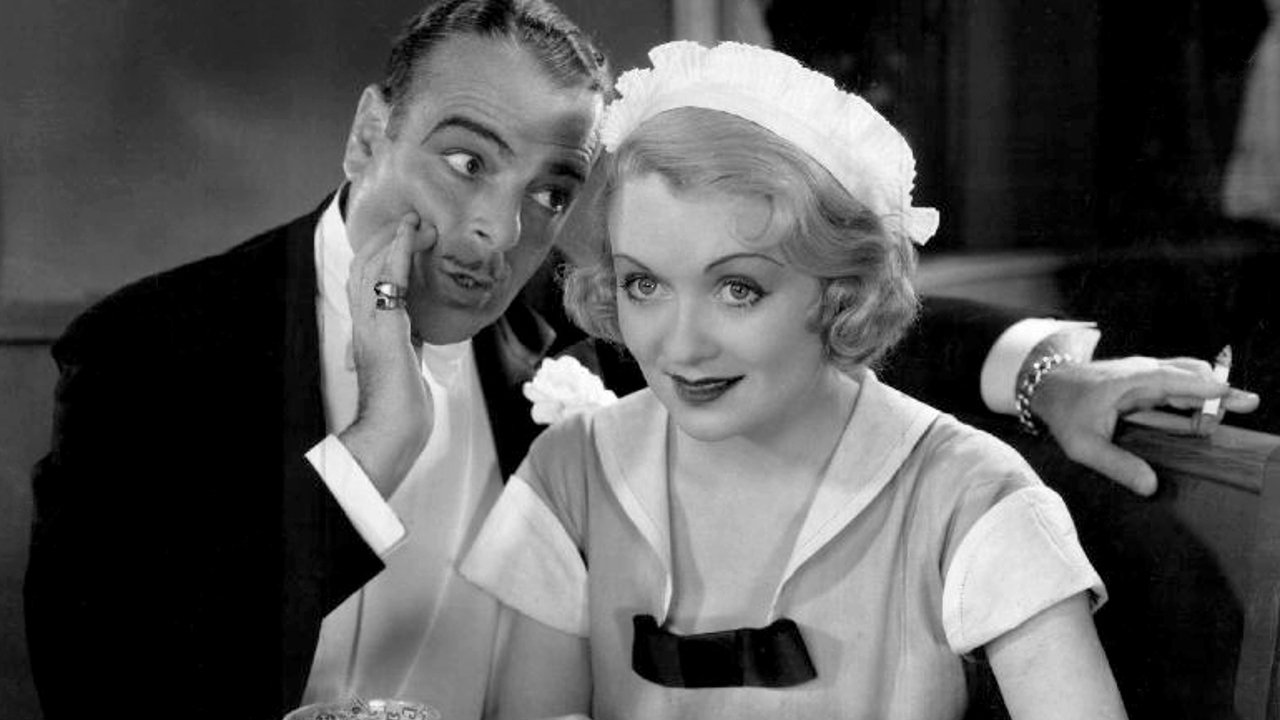
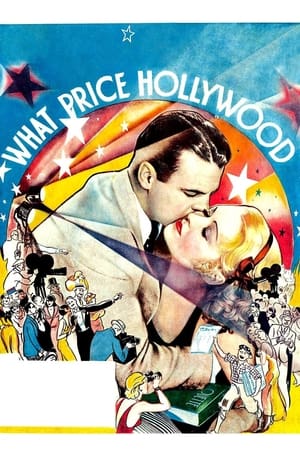
What Price Hollywood?
First intimate expose of the private life and glamorous loves of a Hollywood star
1932 • 1h 28min • ★ 6.708/10 • United States of America
Directed by: George Cukor
Cast: Constance Bennett, Lowell Sherman, Neil Hamilton, Gregory Ratoff, Brooks Benedict
Sassy and ambitious waitress Mary Evans amuses and befriends amiable seldom-sober Hollywood film director Max Carey when he stumbles into her restaurant. Max invites Mary to his film premiere and, after a night of drinking and carousing, Mary is granted a screen test. A studio contract follows. Just as Mary finds her dreams coming true, Carey’s life and career begins its descent.
What Price Hollywood?” is a 1932 drama film directed by George Cukor. Here are three reasons why this film is worth watching:
A compelling story: “What Price Hollywood?” tells the story of a young waitress, Mary Evans (Constance Bennett), who aspires to be an actress and is discovered by a successful director, Max Carey (Lowell Sherman).
The film explores the price of fame and the sacrifices that must be made to achieve success, and it does so in a poignant and thought-provoking way.
Strong performances: The film features excellent performances by Constance Bennett and Lowell Sherman, as well as supporting actors such as Neil Hamilton and Gregory Ratoff.
The characters are well-drawn and believable, and the actors bring them to life with nuance and depth.
Cukor’s direction: As with many of his films, Cukor’s direction in “What Price Hollywood?” is masterful.
He handles the film’s tonal shifts with ease, moving seamlessly from comedy to drama, and he creates a sense of intimacy with the characters that draws the viewer in.
Overall, “What Price Hollywood?” is a classic Hollywood drama that is well worth watching. Its compelling story, strong performances, and masterful direction make it a film that still resonates with audiences today.
10. Adam’s Rib (1949)
“Adam’s Rib” is a 1949 comedy-drama film directed by George Cukor and starring Katharine Hepburn and Spencer Tracy.
The film tells the story of married lawyers, Adam and Amanda Bonner, who find themselves on opposite sides of a high-profile case involving a woman who shot her unfaithful husband.
The film is notable for its sharp script, witty dialogue, and sparkling chemistry between Hepburn and Tracy.
The film’s exploration of gender roles and societal expectations is both thoughtful and humorous, and its themes of love, equality, and justice are still relevant today.
Hepburn and Tracy deliver standout performances, showcasing their trademark wit, intelligence, and charm.
The supporting cast, including Judy Holliday and Tom Ewell, is also excellent, bringing depth and nuance to their characters.
“Adam’s Rib” was a commercial and critical success upon its release, and has since become a classic of Hollywood cinema.
The film’s witty humor, sharp social commentary, and memorable performances continue to captivate and entertain audiences today, and its legacy can be seen in countless films and TV shows that have followed in its wake.
- Spencer Tracy, Katharine Hepburn, Judy Holliday (Actors)
- George Cukor (Director) - Garson Kanin (Writer)
- English, Spanish, French (Subtitles)
- Audience Rating: NR (Not Rated)
11. Born Yesterday (1950)
Born Yesterday is a 1950 comedy-drama film directed by George Cukor and starring Judy Holliday, William Holden, and Broderick Crawford.
Holliday won an Academy Award for her performance as Billie Dawn, a ditzy ex-showgirl who is the girlfriend of a wealthy, corrupt businessman named Harry Brock (Crawford).
Brock hires a journalist named Paul Verrall (Holden) to educate Billie and improve her image, so that she can fit in better with Washington D.C. high society.
As Billie starts to learn about politics and history, she becomes more aware of her own worth and the limitations of her relationship with Brock. T
he film explores themes of education, empowerment, and the corrupting influence of power and money.
Born Yesterday is known for its sharp writing and standout performances, particularly by Holliday, who brings depth and nuance to the role of Billie.
The film’s themes of personal growth and self-discovery have made it a beloved classic, and it continues to be celebrated as a landmark of American cinema.
- Broderick Crawford wants his girlfriend Judy Holliday culturefied and hires William Holden to...
- Judy Holliday, Broderick Crawford, William Holden (Actors)
- George Cukor (Director) - S. Sylvan Simon (Producer)
- English, Spanish, Portuguese, Georgian, Chinese (Subtitles)
- English (Publication Language)
12. A Double Life (1947)
“A Double Life” is a 1947 film noir directed by George Cukor. Here are three reasons why this film is a must-watch:
The performance of Ronald Colman: Ronald Colman’s portrayal of an actor who descends into madness is one of the highlights of “A Double Life.”
He won an Academy Award for Best Actor for his performance, and it’s easy to see why – he’s mesmerizing on screen, both as the charming actor and as the troubled, increasingly dangerous character he becomes.
The noir atmosphere: “A Double Life” is a classic film noir, with moody lighting, shadowy cinematography, and a sense of tension that builds throughout the film.
The atmosphere is expertly crafted by Cukor and his team, and it adds an extra layer of intensity to the already gripping story.
The exploration of identity and reality: The film raises fascinating questions about the nature of identity and reality, and it blurs the line between the two in a way that is both thought-provoking and unsettling.
As the lead character becomes more and more lost in his own madness, the viewer is drawn into a psychological journey that is both thrilling and disturbing.
Overall, “A Double Life” is a must-watch for fans of film noir and classic Hollywood cinema. Its masterful direction, powerful performances, and exploration of complex themes make it a film that continues to captivate audiences today.
- Ronald Colman, Edmond O'Brien, Shelley Winters (Actors)
- George Cukor (Director)
- Audience Rating: Unrated (Not Rated)
13. Edward, My Son (1949)
Edward, My Son” is a 1949 drama film directed by George Cukor and starring Spencer Tracy and Deborah Kerr.
The film tells the story of an ambitious and ruthless businessman, Arnold Boult, who will stop at nothing to ensure his son Edward’s success and financial security.
The film is notable for its powerful performances, particularly from Tracy, who delivers a tour-de-force performance as the manipulative and morally compromised Boult.
Kerr is also excellent as his loyal and long-suffering wife, Evelyn.
“Edward, My Son” is a dark and uncompromising portrait of the corrosive effects of ambition and greed.
The film’s exploration of the sacrifices that parents make for their children and the ethical compromises that individuals are willing to make in the pursuit of success is both thought-provoking and emotionally resonant.
The film was a critical success upon its release, with Tracy receiving widespread acclaim for his performance.
Although not as well-known as some of Cukor’s other films, “Edward, My Son” remains a powerful and haunting portrait of human frailty and the cost of ambition.
- Factory sealed DVD
- Spencer Tracy, Deborah Kerr and Ian Hunter (Actors)
- George Cukor (Director)
- English (Subtitle)
- English (Publication Language)
14. Little Women (1933)
Little Women is a 1933 drama film directed by George Cukor and starring Katharine Hepburn, Joan Bennett, and Frances Dee.
It is based on the classic novel by Louisa May Alcott and follows the lives of the four March sisters as they come of age during the Civil War.
The film features a standout performance by Hepburn as Jo March, a fiercely independent writer who struggles to find her place in a society that doesn’t value women’s intellect and creativity.
The other sisters – Meg, Amy, and Beth – also face their own challenges and triumphs as they navigate the difficulties of growing up and falling in love.
Little Women is known for its poignant portrayal of family, sisterhood, and the bonds that connect us across time and distance.
The film’s message of resilience and hope in the face of hardship has resonated with audiences for generations, and it continues to be celebrated as a timeless classic of American cinema.
- Amazon Prime Video (Video on Demand)
- Katharine Hepburn, Joan Bennett, Paul Lukas (Actors)
- George Cukor (Director) - Sarah Y. Mason (Writer) - Merian C. Cooper (Producer)
- English (Playback Language)
- English (Subtitle)
15. Les Girls (1957)
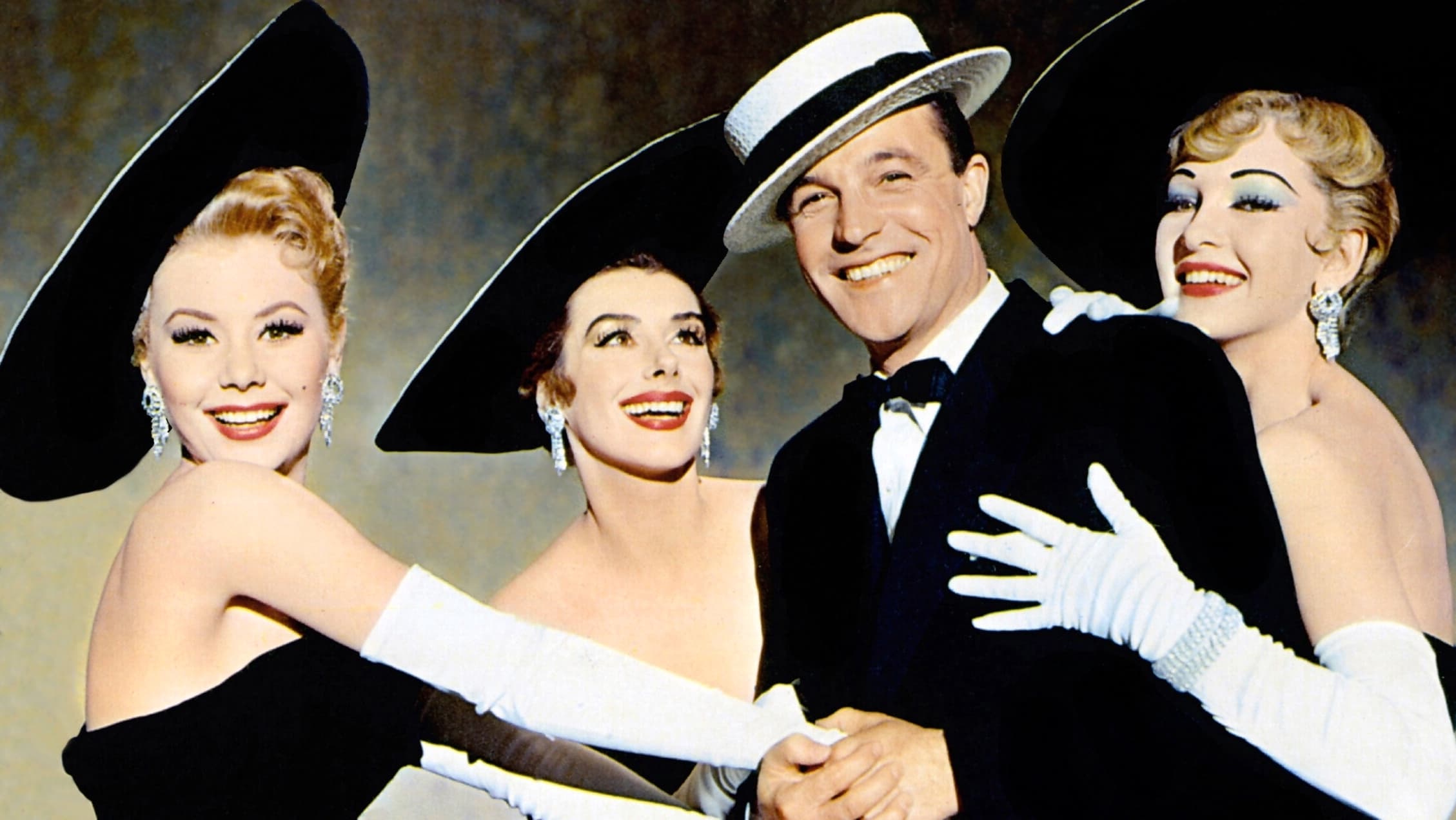
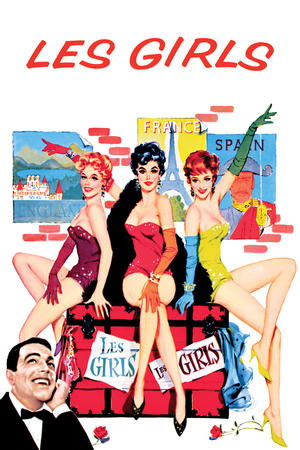
Les Girls
Join "Les Girls" And See A World Of Entertainment !
1957 • 1h 54min • ★ 6.4/10 • United States of America
Directed by: George Cukor
Cast: Gene Kelly, Mitzi Gaynor, Kay Kendall, Taina Elg, Jacques Bergerac
After writing a tell-all book about her days in the dance troupe "Barry Nichols and Les Girls", Sybil Wren is sued for libeling her fellow dancer Angele. A Rashômon style narrative presents the story from three points of view where Sybil accuses Angele of having an affair with Barry, while Angele insists that it was actually Sybil who was having the affair. Finally, Barry gives his side of the story.
“Les Girls” is a 1957 musical comedy directed by George Cukor. Here are three reasons why this film is worth watching:
The cast: “Les Girls” features a talented cast that includes Gene Kelly, Mitzi Gaynor, and Kay Kendall. They all deliver impressive performances, and their chemistry on screen is palpable.
The musical numbers are also a highlight of the film, with Kelly showcasing his signature dance moves.
Cukor’s direction: As with many of his films, Cukor’s direction in “Les Girls” is precise and elegant. He uses the film’s Parisian setting to great effect, and he imbues the film with a sense of lightness and charm that perfectly suits the story.
The exploration of truth and subjectivity: “Les Girls” is an unusual musical in that it is framed as a trial, with each of the lead characters testifying about their experiences.
This structure allows the film to explore questions of truth and subjectivity in a playful and engaging way, and it adds an extra layer of depth to what might otherwise be a simple musical comedy.
Overall, “Les Girls” is a delightful and entertaining musical that showcases the talents of its cast and director. Its exploration of complex themes through a light and playful story make it a film that is both enjoyable and thought-provoking.
- Gene Kelly, Mitzi Gaynor, Kay Kendall (Actors)
- George Cukor (Director)
- English (Publication Language)
- Audience Rating: NR (Not Rated)
16. Pat and Mike (1952)
“Pat and Mike” is a 1952 sports comedy film directed by George Cukor and starring Katharine Hepburn and Spencer Tracy.
The film tells the story of Pat Pemberton, a talented athlete who is taken under the wing of shady sports promoter Mike Conovan.
As Pat rises to fame and success, she must also navigate her complicated relationship with Mike and the pressures of being a female athlete in a male-dominated world.
The film is notable for its lively script, sparkling chemistry between Hepburn and Tracy, and its progressive depiction of a strong and independent female athlete.
The film’s themes of gender equality and female empowerment were ahead of their time, and continue to resonate with audiences today.
Hepburn delivers a standout performance as Pat, showcasing her athletic prowess and her trademark intelligence and humor. Tracy is also excellent as Mike, capturing the character’s charm and complexity with nuance and skill.
“Pat and Mike” was a commercial and critical success upon its release, and remains a beloved classic of Hollywood cinema.
The film’s witty humor, memorable performances, and progressive themes continue to captivate and inspire audiences today, and its legacy can be seen in countless films and TV shows that have followed in its wake.
- Spencer Tracy, Katharine Hepburn, Aldo Ray (Actors)
- George Cukor (Director) - Ruth Gordon (Writer) - Lawrence Weingarten (Producer)
- English, French, Spanish (Subtitles)
- Audience Rating: NR (Not Rated)
17. The Actress (1953)
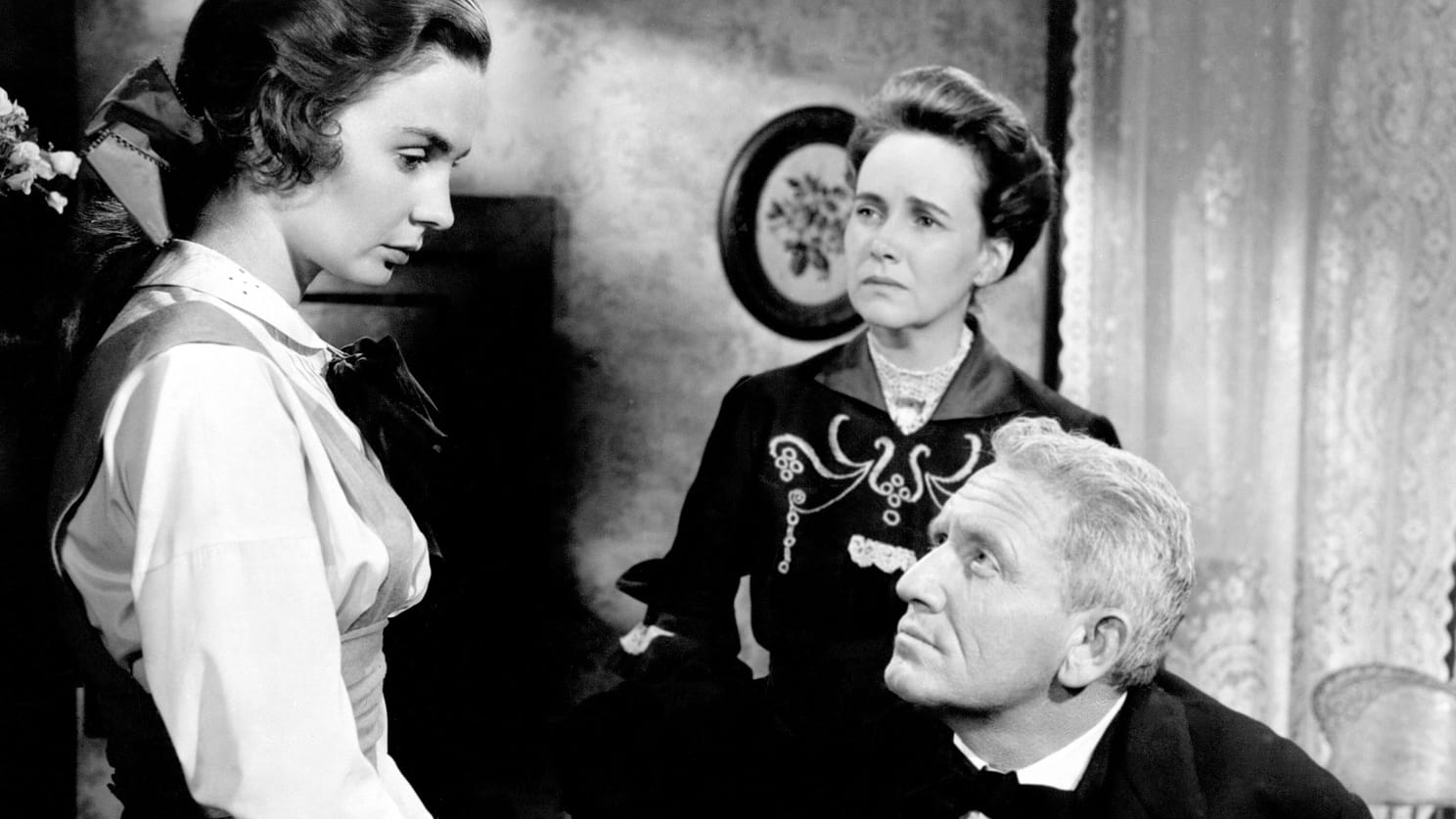
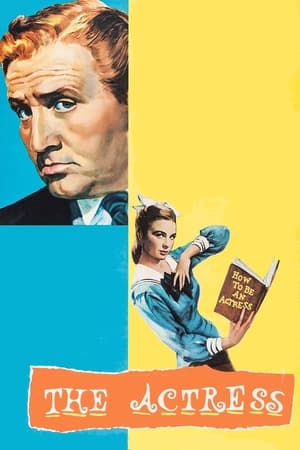
The Actress
There's hope and heart-ache in the adventures of a stage-struck daughter!
1953 • 1h 30min • ★ 6.2/10 • United States of America
Directed by: George Cukor
Cast: Spencer Tracy, Jean Simmons, Teresa Wright, Anthony Perkins, Ian Wolfe
The true story of Ruth Gordon's early struggles on the road to stage stardom.
The Actress is a 1953 comedy-drama film directed by George Cukor and starring Jean Simmons, Spencer Tracy, and Teresa Wright.
The film follows the story of a teenage girl named Ruth Gordon Jones (Simmons), who dreams of becoming an actress despite the disapproval of her parents, especially her father (Tracy), a small-town New England factory owner who has no interest in the theater.
Ruth eventually leaves home and heads to New York City to pursue her dreams, facing a series of challenges and setbacks as she tries to make it in the competitive world of theater.
The film explores themes of self-discovery, family dynamics, and the sacrifices we make to pursue our passions.
Simmons delivers a standout performance as Ruth, capturing the vulnerability and determination of a young woman who is trying to find her place in the world.
Tracy is equally memorable as Ruth’s tough but loving father, and Wright provides excellent support as Ruth’s supportive and practical-minded mother.
The Actress is known for its sharp writing, memorable performances, and insightful exploration of the struggles and joys of pursuing a creative career. It continues to be celebrated as a beloved classic of American cinema.
- Factory sealed DVD
- Spencer Tracy, Anthony Perkins, Jean Simmons (Actor)
- George Cukor (Director)
- English (Publication Language)
- Audience Rating: NR (Not Rated)
18. Wild Is the Wind (1957)
“Wild Is the Wind” is a song that was written by Dimitri Tiomkin and Ned Washington in 1957. The song was originally composed for the movie of the same name, which starred Anna Magnani and Anthony Quinn.
The song was performed by Johnny Mathis for the movie’s soundtrack and became one of his signature songs.
The lyrics of “Wild Is the Wind” describe the intensity and unpredictability of love.
The opening lines set the tone: “Love me, love me, love me / Say you do / Let me fly away with you.” The song goes on to describe the highs and lows of a passionate relationship, with lyrics such as “Wild is the wind / Wild is the wind / You touch me / I hear the sound of mandolins.”
Over the years, “Wild Is the Wind” has been covered by many artists, including Nina Simone, David Bowie, and George Michael.
Nina Simone’s version is particularly well-known and is often considered to be one of the greatest covers of all time. Simone’s version, which was released in 1959, features a slower tempo and a more mournful, soulful tone than Mathis’s original version.
The song’s haunting melody and emotional lyrics have made it a timeless classic.
- Wild Is the Wind (1957)
- Wild Is the Wind (1957)
- Anna Magnani, Anthony Quinn, Anthony Franciosa (Actors)
- George Cukor (Director) - Wild Is the Wind (1957) (Producer)
- Italian, English (Subtitles)
19. One Hour with You (1932)
“One Hour with You” is a 1932 musical comedy directed by Ernst Lubitsch and starring Maurice Chevalier and Jeanette MacDonald.
The film tells the story of a happily married couple, Andre and Colette Bertier, who are suddenly confronted with the temptation of infidelity.
The film was a remake of the 1924 silent film “The Marriage Circle,” also directed by Lubitsch. It was one of the earliest musicals made in Hollywood and was notable for its sophisticated humor and adult themes.
Chevalier and MacDonald were both popular musical stars of the time and had great chemistry on screen.
The film features several memorable musical numbers, including “What a Little Moonlight Can Do,” which was later made famous by Billie Holiday.
The film was well-received by audiences and critics and was nominated for the Academy Award for Best Picture. It was also a significant box office success, earning over $1.2 million at the time of its release.
Overall, “One Hour with You” is a charming and lighthearted romantic comedy that showcases the talents of its talented cast and director.
- One Hour with You (1932) ( 1 Hour with You )
- One Hour with You (1932)
- 1 Hour with You
- Maurice Chevalier, Jeanette MacDonald, Genevieve Tobin (Actors)
- Ernst Lubitsch (Director) - One Hour with You (1932) ( 1 Hour with You ) (Producer)
20. Love Among the Ruins (1975 TV Movie)
“Love Among the Ruins” is a 1975 made-for-television movie directed by George Cukor and starring Katharine Hepburn and Laurence Olivier.
The film is a romantic comedy set in the Edwardian era, and tells the story of a wealthy, aging woman named Jessica Medlicott (Hepburn) who hires a young, impoverished barrister named Thomas Mendip (Olivier) to defend her in a breach of promise suit.
Despite their differences in age and social status, Jessica and Thomas are drawn to each other, and they begin a romantic relationship.
However, their relationship is threatened by the legal case, as well as by the disapproval of Jessica’s family and friends. Ultimately, the two must navigate the challenges that arise as they try to build a life together.
“Love Among the Ruins” received critical acclaim for the performances of Hepburn and Olivier, as well as for Cukor’s direction.
The film was nominated for several awards, including five Emmy Awards, and won two, including one for Hepburn’s performance. It is regarded as a classic of television drama and is still beloved by many fans of both Hepburn and Olivier.
- Katharine Hepburn, Laurence Olivier, Colin Blakely (Actors)
- Audience Rating: NR (Not Rated)
21. Romeo and Juliet (1936)
“Romeo and Juliet” is a film adaptation of William Shakespeare’s famous play, which was released in 1936.
The film was directed by George Cukor and stars Norma Shearer as Juliet and Leslie Howard as Romeo. The film was produced by MGM and was one of the most expensive films of its time.
The story of “Romeo and Juliet” follows the tragic love affair between two young lovers from feuding families in Renaissance-era Verona, Italy.
Despite the hatred between their families, Romeo and Juliet fall deeply in love and decide to marry in secret. However, their plans are thwarted by a series of tragic events that lead to the deaths of both Romeo and Juliet.
The 1936 film adaptation of “Romeo and Juliet” received mixed reviews at the time of its release, with some critics praising the performances of Shearer and Howard, while others criticized the film’s pacing and editing.
https://www.youtube.com/watch?v=IoAgB_sbDOE
However, the film was a commercial success and was nominated for four Academy Awards, including Best Picture.
The film’s visual style, including its lavish sets and costumes, was highly praised, as was the use of the original Shakespearean text in the script. The film’s score, which was composed by Herbert Stothart, also received critical acclaim.
Overall, the 1936 film adaptation of “Romeo and Juliet” remains an important and influential interpretation of Shakespeare’s timeless tragedy, and has inspired countless subsequent film and stage adaptations.
- Norma Shearer, Leslie Howard, John Barrymore (Actors)
- George Cukor (Director)
- Spanish (Publication Language)
- Audience Rating: NR (Not Rated)
22. David Copperfield (1935)
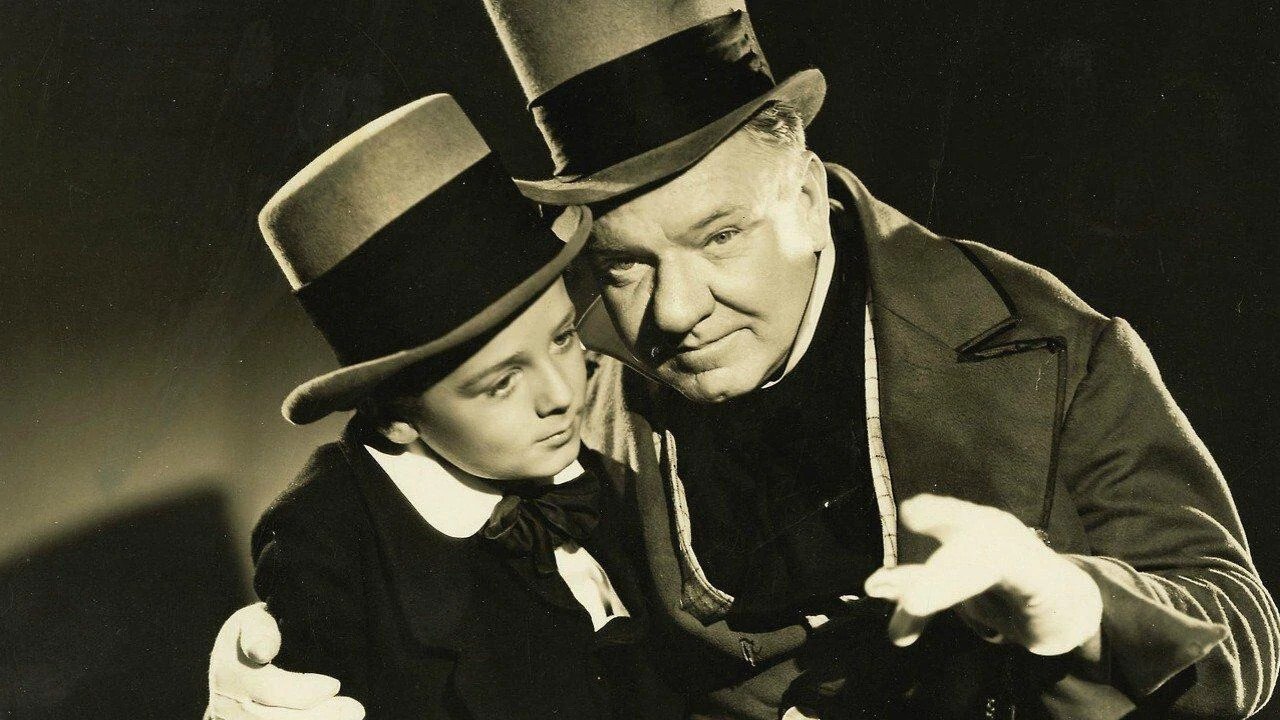
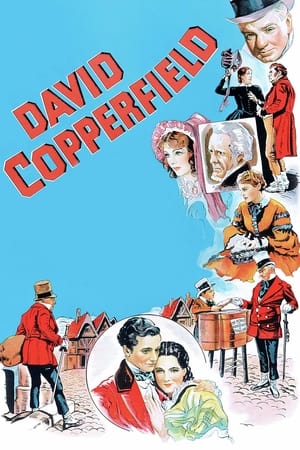
David Copperfield
1935's most beloved motion picture!
1935 • 2h 10min • ★ 6.662/10 • United States of America
Directed by: George Cukor
Cast: Freddie Bartholomew, Frank Lawton, Edna May Oliver, Jessie Ralph, Madge Evans
Charles Dickens' timeless tale of an ordinary young man who lives an extraordinary life, filled with people who help and hinder him.
“David Copperfield” is a 1935 film directed by George Cukor and starring Freddie Bartholomew as the young David Copperfield and W.C. Fields as his hapless and comical stepfather, Mr. Micawber.
The film is based on the novel of the same name by Charles Dickens.
The story follows the life of David Copperfield, a young orphan who experiences poverty, hardship, and tragedy before finally finding happiness and success.
Along the way, he encounters a colorful cast of characters, including the cruel schoolmaster Mr. Creakle (played by Lionel Barrymore) and the kind-hearted Aunt Betsey Trotwood (played by Edna May Oliver).
The film features lavish sets and costumes that capture the Victorian era and the spirit of the novel.
The performances are also noteworthy, with Bartholomew delivering a poignant and sympathetic portrayal of David Copperfield and Fields bringing his trademark humor and wit to the role of Mr. Micawber.
“David Copperfield” was a critical and commercial success, earning several Academy Award nominations, including Best Picture, Best Director, and Best Supporting Actor for Fields.
The film is widely regarded as one of the best adaptations of Dickens’ work and remains a beloved classic of American cinema.
No products found.
23. Two-Faced Woman (1941)
“Two-Faced Woman” is a 1941 romantic comedy film directed by George Cukor and starring Greta Garbo and Melvyn Douglas.
The film tells the story of a glamorous ski instructor named Karin (Garbo) who falls in love with a wealthy publisher named Larry (Douglas) while working at a ski resort.
The two quickly marry and move to New York City, but their happiness is threatened when Karin’s unpretentious nature clashes with the expectations of high society.
In an attempt to fit in with Larry’s social circle, Karin adopts a more sophisticated persona, but her efforts backfire and she is exposed as a fraud.
Larry, feeling betrayed, begins to doubt his love for Karin and begins to fall for her more polished twin sister, who arrives on the scene.
Eventually, Karin realizes the error of her ways and attempts to win back Larry’s love, but it may be too late.
“Two-Faced Woman” was controversial upon its release due to its portrayal of Garbo’s character as a deceitful and calculating woman who changes her personality to please a man.
The film was also criticized for its negative portrayal of women in general. Despite these criticisms, the film was a box office success, and Garbo’s performance was praised by many critics.
However, it marked the end of Garbo’s film career as she retired from acting shortly after the film’s release.
- Factory sealed DVD
- Greta Garbo, Melvyn Douglas, Constance Bennett (Actors)
- George Cukor (Director)
- English (Publication Language)
- Audience Rating: NR (Not Rated)
24. Sylvia Scarlett (1935)
“Sylvia Scarlett” is a film directed by George Cukor and released in 1935.
The film stars Katharine Hepburn as Sylvia Scarlett, a young woman who disguises herself as a man, along with her father (Edmund Gwenn), in order to avoid the law after they are implicated in a financial scandal.
Along the way, they meet a con artist named Jimmy Monkley (Cary Grant) who becomes involved in their misadventures.
The film received mixed reviews upon its initial release, with some critics praising Hepburn’s performance and the film’s unconventional gender-bending storyline, while others found the film to be overly quirky and uneven.
However, over time, “Sylvia Scarlett” has come to be regarded as a cult classic and an important early example of Hollywood exploring gender and sexuality in cinema.
The film was notable for Hepburn’s androgynous appearance and her convincing portrayal of a young woman passing as a man.
Hepburn’s unconventional look and mannerisms challenged traditional Hollywood gender roles and helped to pave the way for greater diversity and representation in Hollywood films.
In addition to Hepburn’s performance, the film is also remembered for its use of cross-dressing and gender-bending as a comedic device, as well as for its lush cinematography and art direction.
While “Sylvia Scarlett” may not have been a commercial success at the time of its release, it has become a significant film in the history of Hollywood and a noteworthy example of gender-bending in cinema.
- Katharine Hepburn, Cary Grant, Brian Aherne (Actors)
- George Cukor (Director)
- Audience Rating: NR (Not Rated)
25. Travels with My Aunt (1972)
“Travels with My Aunt” is a 1972 film directed by George Cukor and starring Maggie Smith, Alec McCowen, and Louis Gossett Jr. The film is based on the novel of the same name by Graham Greene.
The story follows Henry Pulling (played by McCowen), a retired bank manager who meets his eccentric Aunt Augusta (played by Smith) at his mother’s funeral.
Augusta takes Henry on a whirlwind adventure across Europe and North Africa, involving him in her shady dealings and introducing him to a variety of colorful characters.
Maggie Smith delivers a standout performance as the larger-than-life Aunt Augusta, and the film features several memorable set pieces and comedic moments.
The film also deals with themes of identity, class, and family, as Henry grapples with his own sense of self and the secrets of his family’s past.
“Travels with My Aunt” was generally well-received by critics and was nominated for four Academy Awards, including Best Actress for Smith.
The film is notable for its stylish visuals and witty script, and remains a beloved cult classic today.
- Factory sealed DVD
- Maggie Smith, Alec Mccowen, Lou Gossett Jr (Actors)
- George Cukor (Director)
- English (Publication Language)
- Audience Rating: PG (Parental Guidance Suggested)
3 Characteristics of George Cukor Films
George Cukor was a versatile and influential filmmaker who worked across a wide range of genres throughout his career. While his films display a range of styles and themes, there are several characteristics that are often associated with Cukor’s work. Here are three:
Emphasis on characterization: Cukor was known for his ability to draw out nuanced performances from his actors, and his films often feature complex, well-developed characters.
He was particularly adept at creating strong female characters, and many of his films focus on the lives and experiences of women.
Dialogue-driven storytelling: Cukor’s films often feature witty, intelligent dialogue that moves the story forward and reveals the inner workings of his characters.
He was particularly skilled at capturing the nuances of human interaction and often used dialogue to explore social and cultural issues.
Attention to detail: Cukor was known for his meticulous attention to detail, both in terms of set design and costume design.
He was particularly interested in the use of color and texture in his films, and often worked closely with his production designers and costume designers to create vivid, visually striking images on screen. This attention to detail helped to create a sense of realism and authenticity in his films.
3 Reasons Why You Should Watch George Cukor Films
George Cukor was a highly acclaimed and influential film director who worked during the Golden Age of Hollywood.
He directed over 50 films during his career, many of which are now considered classics. Here are three reasons why you should watch George Cukor films:
Strong performances: Cukor was known for his ability to elicit great performances from his actors.
He directed some of the most iconic performances in Hollywood history, including Katharine Hepburn in “The Philadelphia Story,” Judy Garland in “A Star is Born,” and Audrey Hepburn in “My Fair Lady.” His films often feature complex and nuanced characters brought to life by talented actors.
Varied genres: Cukor was a versatile director who worked across a wide range of genres, including comedies, dramas, musicals, and romances.
He had a talent for bringing his own unique touch to each genre he tackled, creating films that were both entertaining and thought-provoking.
Whether you’re in the mood for a classic Hollywood romance or a cutting-edge social commentary, there’s likely a Cukor film that fits the bill.
Masterful storytelling: Cukor was a master storyteller who had a keen eye for detail and a talent for bringing stories to life on screen.
His films often feature intricate and engaging plots that are driven by fully-realized characters.
He was a master of pacing, using just the right amount of tension and release to keep audiences engaged from beginning to end.
In short, George Cukor was a highly skilled and influential director who left an indelible mark on the history of cinema.
His films are still revered today for their strong performances, varied genres, and masterful storytelling, making them a must-watch for any movie lover.
Best George Cukor Films – Wrapping Up
George Cukor was a highly influential and accomplished film director who worked in Hollywood for over five decades, directing numerous classic films and collaborating with some of the biggest stars in the industry.
Some of the best George Cukor films include:
“The Philadelphia Story” (1940) – This romantic comedy stars Katharine Hepburn, Cary Grant, and James Stewart, and is considered a classic of the genre.
“Gone with the Wind” (1939) – Cukor was initially slated to direct this epic historical drama, but was replaced early in production. Nevertheless, his contributions to the film’s early development were significant.
“A Star is Born” (1954) – This musical drama stars Judy Garland and James Mason, and is considered one of the best films about the film industry.
“My Fair Lady” (1964) – This musical adaptation of the Broadway show stars Audrey Hepburn and Rex Harrison, and won multiple Academy Awards, including Best Picture.
“Adam’s Rib” (1949) – This comedy-drama stars Spencer Tracy and Katharine Hepburn as rival lawyers and is notable for its depiction of gender dynamics and feminist themes.
“Gaslight” (1944) – This psychological thriller stars Ingrid Bergman and Charles Boyer, and is notable for its exploration of mental illness and domestic abuse.
These films represent just a small sampling of George Cukor’s varied and influential body of work, and his contributions to the art of cinema continue to be felt to this day.










![Dinner at Eight [DVD]](https://m.media-amazon.com/images/I/51jJ5ppZ-DL.jpg)


![Holiday (1938) [CRITERION COLLECTION] UK Only [Blu-ray] [2019]](https://m.media-amazon.com/images/I/51ctageE4lL.jpg)

![Adam's Rib [DVD]](https://m.media-amazon.com/images/I/51bHnVbcIUL.jpg)




![Les Girls (1957) [Blu-ray]](https://m.media-amazon.com/images/I/61GSj33yLDL.jpg)


![Wild Is the Wind (1957) [ NON-USA FORMAT, PAL, Reg.2 Import - Italy ]](https://m.media-amazon.com/images/I/51mAFWZTDZL.jpg)
![One Hour with You (1932) ( 1 Hour with You ) [ NON-USA FORMAT, PAL, Reg.2 Import - France ]](https://m.media-amazon.com/images/I/41eY0seSjPS.jpg)





